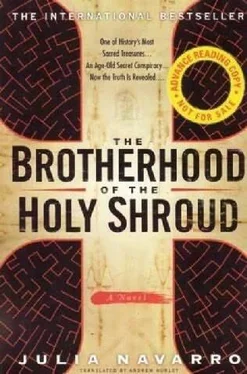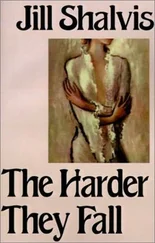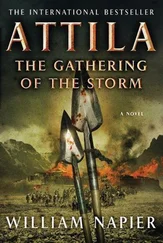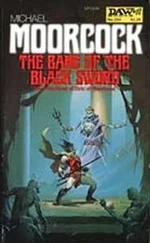Jose Sa Beiro knew that in order to fulfill the final instructions of the last Grand Master, the great, murdered Jacques de Molay, he must send the sacred shroud to Scotland, to ensure its safety forever. He had made arrangements for Beltran de Santillana to travel with the treasure to the Temple house in Arbroath, accompanied by Joao de Tomar, Wilfred de Payens, and other knights, all of whom were sworn to protect the shroud, to the death if need be.
The master of Castro Marim had given de Santillana a letter for the Scottish master and also the original letter sent by Jacques de Molay, which set forth the reasons for keeping the Temple's possession of the shroud of Jesus a zealously guarded secret. The Scottish master would determine where to hide the relic. It would be his responsibility never to allow the shroud to pass into other than Templar hands, and to preserve the secret of its possession for all time.
The boat doubled the bend in the Guadiana on its way down to the sea, where a ship lay waiting. The knights did not look back; they did not wish to be overcome by emotion as they left Portugal forever.
The knights' ship was about to founder, so great was the tempest that had come upon them in their voyage to Scotland. The wind and rain tossed the boat about like a nutshell, but thus far it had withstood the storm.
At last, the cliffs of the Scottish coast heralded the end of their voyage. They made their way through the wild hills to Arbroath and to sanctuary.
The brothers of the Scottish Temple had heard of and mourned the terror the pope and the king of France had sown among the Templars. Here they and their brothers would be safe, thanks to their good relations with Robert Bruce, alongside whom they fought to defend Scotland from its enemies.
After a time, the master called the entire company into the chapter meeting hall, together with the brothers who had voyaged from Portugal. There, before the astonished eyes of the assembled knights, he unfolded the full length of the sacred cloth. It bore a great resemblance to the painting they worshipped in the chapter's private chapel-the true face and figure of Christ that had been copied from this holy relic so that the Templars might always have the image of their Savior before them.
The sun was rising over the sea when the knights went forth from the hall where, all through the night, they had prayed together before the singular visage of Christ, imprinted upon the shroud that had held his body within its folds.
Beltran de Santillana remained behind with the master of the Scottish Templars. The two men talked for a time and then, carefully folding the sacred cloth, they put away the Temple's most precious treasure-a treasure that, with the passing of the centuries and as commanded by the last Grand Master, only a few of the elect would now view.
Here it would lie in a consecrated sanctuary, safe forever from the machinations of those who would seek to corrupt its holy essence for their own ends, or use it to sow discord among the kingdoms of the earth. Those who attempted to disturb it would do so at their peril.
Jacques de Molay could at last rest in peace.
IT HAD BEEN ALMOST SEVEN MONTHS SINCE the accident. She limped. They had operated on her four times, and one leg had been left shorter than the other. Her face no longer glowed as it once had; it was crisscrossed with scars and wrinkles. She'd left the hospital just four days ago. The injuries to her body didn't hurt her, but the grief, as tight about her chest as an iron band, was worse than the pain she'd felt in the accident and its aftermath all those months ago.
Sofia Galloni had just left a meeting in the Minister of the Interior's office. Before that, she'd gone to the cemetery to leave flowers on the graves of Minerva and Pietro. Marco and she had been luckier; they'd survived. Of course Marco would never work again; he was in a wheelchair, and he suffered from periodic panic attacks. He cursed himself for living when so many of his men had died in the rubble of the tunnel, that tunnel he'd always known existed. Well, he'd finally found it.
The Minister of Culture had attended Sofia's meeting with the Minister of the Interior; they continued to share oversight over the Art Crimes Department. They had both asked Sofia to take the director's position, and she had politely refused. She knew she had planted the seed of doubt in the two politicians and that once again her life might be in danger, but she didn't care.
She had sent them a report on the shroud case. It provided a detailed account of everything she knew, including the conversation between Ana Jimenez and Padre Yves. The case had been closed, classified as a state secret never to be disclosed to the public, and Ana was lying dead in a tunnel below Turin next to the last Templar of the House of de Charney.
The ministers told her, very amiably, that the story was unbelievable, that there were no witnesses, nothing-not a single document that corroborated her report. Naturally, they believed her, they said, but wasn't it possible that she was mistaken? They had made inquiries in Paris, but neither Elisabeth McKenny nor her husband, Paul Bisol, were anywhere to be found. They could hardly accuse men like Lord McCall, Umberto D'Alaqua, Dr. Bolard of criminal association without incontrovertible evidence. These men were pillars of international finance, and their fortunes were essential to the development of their respective nations. How could the minister present himself in the Vatican and tell the pope that Cardinal Visier was a Templar? How could he accuse them of anything-they hadn't done anything, even if everything Sofia told them was true.
These men had not conspired against the state, against any state; they weren't trying to subvert democratic governance; they weren't connected to the Mafia or any other criminal organization; they'd done nothing even to be censured for, let alone accused of. And as for being Templars, well, that was no crime-assuming they were Templars.
They tried to convince Sofia to take the job Marco Valoni had left. If she didn't, it would go to Antonino or Giuseppe. What did she think?
But she didn't think-she knew that one of them, either the cop or the historian, was the traitor. One of them had been reporting to the Templars on everything that happened in the Art Crimes Department. Padre Yves had implied as much: They knew everything because they had informers everywhere.
She didn't know what she was going to do with the rest of her life, but she did know she had to face one man, a man with whom she was in love, despite everything. In love with or obsessed by? She had tried to sort that out during her long convalescence and still wasn't sure.
Her leg hurt when she stepped on the accelerator. She hadn't driven in months, not since the crash. She knew it had been no accident, that they had tried to kill her, and that D'Alaqua was trying to save her when he called to beg her to go with him to Syria. Strong measures, Padre Yves had said,… only when necessary.
She arrived at the imposing iron gates that led to the mansion, and she waited. A few seconds later they opened. She drove up to the door and got out of the car.
Umberto D'Alaqua was waiting for her.
"Sofia…"
He led her into his office. He sat behind the desk, maintaining his distance, or perhaps protecting himself from this woman with a limp and a face crisscrossed with scars, a woman whose blue eyes were harder than the last time he'd seen them. Even so, she was still beautiful; now, though, it was a tragic beauty.
"I guess you know that I sent the administration a report on the shroud case," she said, staring at him. 'A report in which I state that there exists a secret organization made up of powerful men who believe they stand above other men, governments, society itself, and I ask that their identities be revealed and that they be investigated. But you already know that none of that will ever happen, that no one will investigate you, that you will be able to keep doing what you do from the shadows."
Читать дальше












